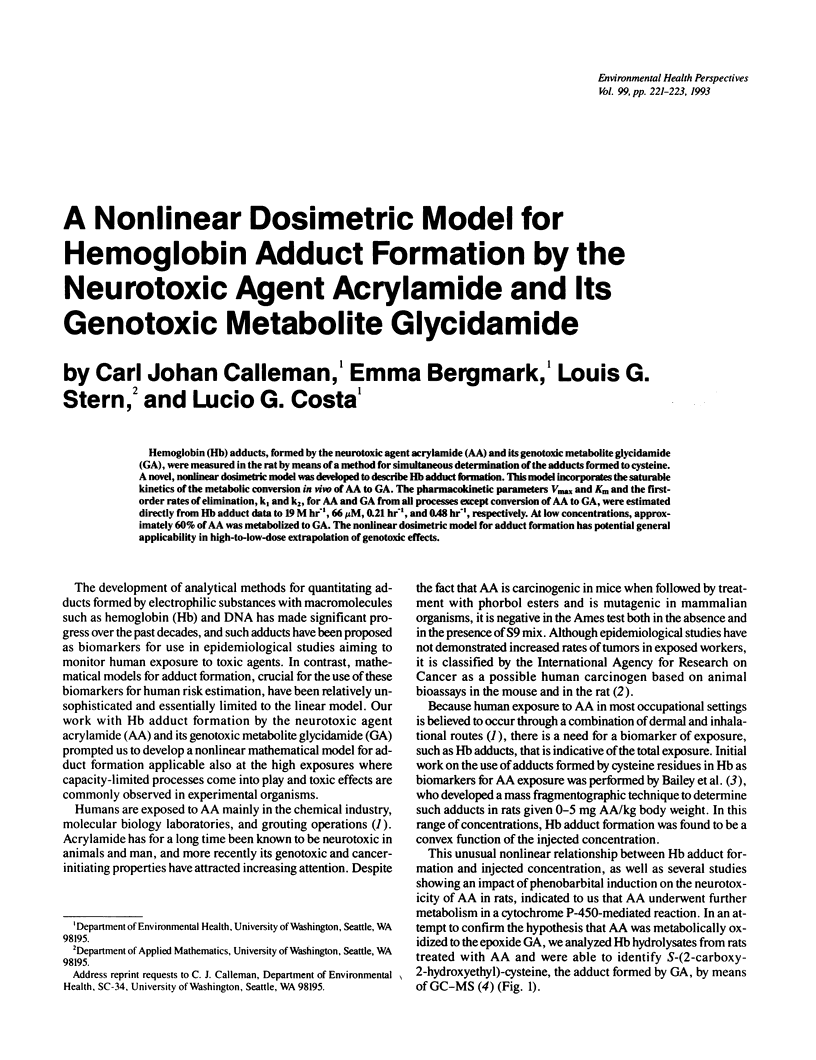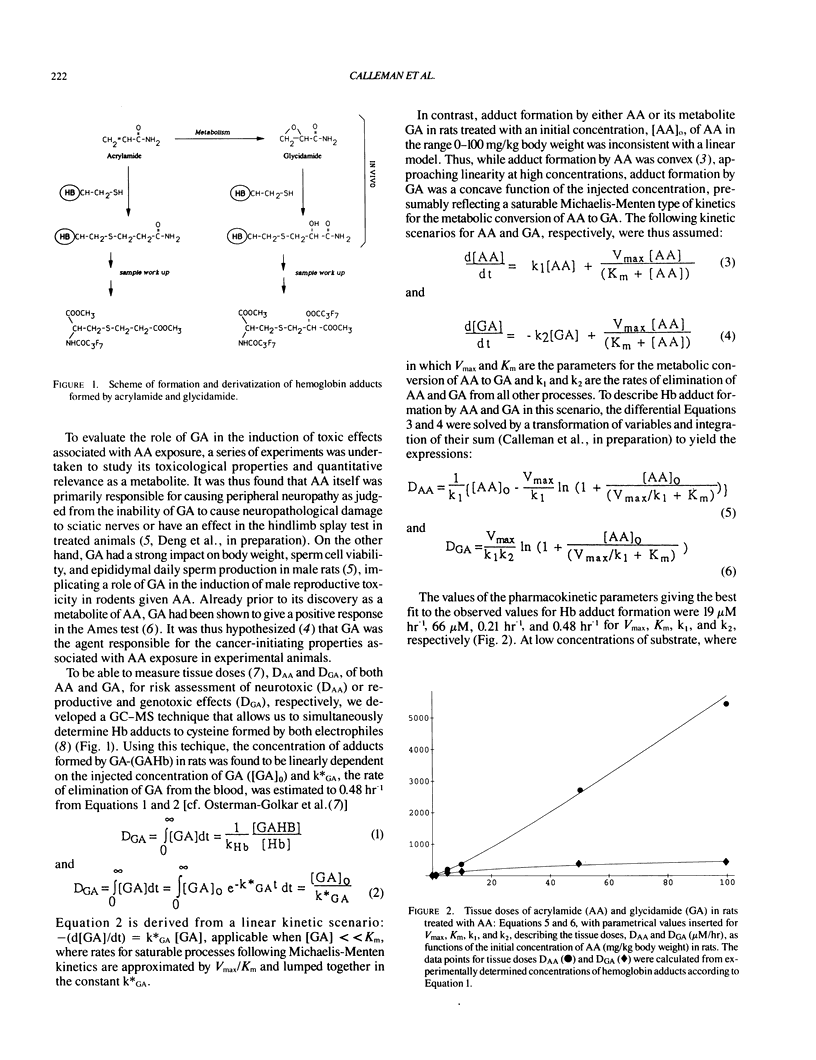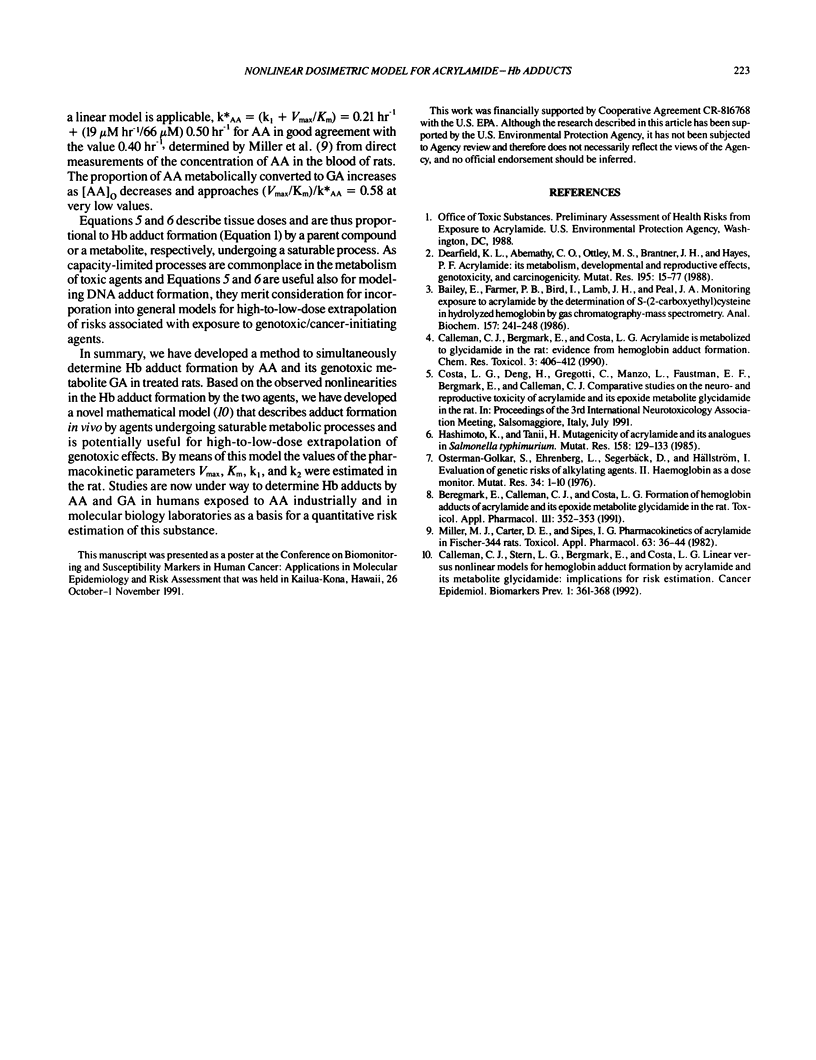Abstract
Hemoglobin (Hb) adducts, formed by the neurotoxic agent acrylamide (AA) and its genotoxic metabolite glycidamide (GA), were measured in the rat by means of a method for simultaneous determination of the adducts formed to cysteine. A novel, nonlinear dosimetric model was developed to describe Hb adduct formation. This model incorporates the saturable kinetics of the metabolic conversion in vivo of AA to GA. The pharmacokinetic parameters Vmax and Km and the first-order rates of elimination, k1 and k2, for AA and GA from all processes except conversion of AA to GA, were estimated directly from Hb adduct data to 19 M hr-1, 66 microM, 0.21 hr-1, and 0.48 hr-1, respectively. At low concentrations, approximately 60% of AA was metabolized to GA. The nonlinear dosimetric model for adduct formation has potential general applicability in high-to-low-dose extrapolation of genotoxic effects.
Full text
PDF


Selected References
These references are in PubMed. This may not be the complete list of references from this article.
- Bailey E., Farmer P. B., Bird I., Lamb J. H., Peal J. A. Monitoring exposure to acrylamide by the determination of S-(2-carboxyethyl)cysteine in hydrolyzed hemoglobin by gas chromatography-mass spectrometry. Anal Biochem. 1986 Sep;157(2):241–248. doi: 10.1016/0003-2697(86)90621-4. [DOI] [PubMed] [Google Scholar]
- Bergmark E., Calleman C. J., Costa L. G. Formation of hemoglobin adducts of acrylamide and its epoxide metabolite glycidamide in the rat. Toxicol Appl Pharmacol. 1991 Nov;111(2):352–363. doi: 10.1016/0041-008x(91)90036-e. [DOI] [PubMed] [Google Scholar]
- Calleman C. J., Bergmark E., Costa L. G. Acrylamide is metabolized to glycidamide in the rat: evidence from hemoglobin adduct formation. Chem Res Toxicol. 1990 Sep-Oct;3(5):406–412. doi: 10.1021/tx00017a004. [DOI] [PubMed] [Google Scholar]
- Calleman C. J., Stern L. G., Bergmark E., Costa L. G. Linear versus nonlinear models for hemoglobin adduct formation by acrylamide and its metabolite glycidamide: implications for risk estimation. Cancer Epidemiol Biomarkers Prev. 1992 Jul-Aug;1(5):361–368. [PubMed] [Google Scholar]
- Hashimoto K., Tanii H. Mutagenicity of acrylamide and its analogues in Salmonella typhimurium. Mutat Res. 1985 Dec;158(3):129–133. doi: 10.1016/0165-1218(85)90075-8. [DOI] [PubMed] [Google Scholar]
- Miller M. J., Carter D. E., Sipes I. G. Pharmacokinetics of acrylamide in Fisher-344 rats. Toxicol Appl Pharmacol. 1982 Mar 30;63(1):36–44. doi: 10.1016/0041-008x(82)90024-2. [DOI] [PubMed] [Google Scholar]
- Osterman-Golkar S., Ehrenberg L., Segerbäck D., Hällström I. Evaluation of genetic risks of alkylating agents. II. Haemoglobin as a dose monitor. Mutat Res. 1976 Jan;34(1):1–10. doi: 10.1016/0027-5107(76)90256-6. [DOI] [PubMed] [Google Scholar]


